#glen galloway
Explore tagged Tumblr posts
Text
youtube
Trumans Water - Aroma Of Gina Arnold
#trumans water#aroma of gina arnold#kevin branstetter#glen galloway#kirk branstetter#eli moyal#noise rock#punk#punk rock#spasm smash xxxoxox & ass#1993#Youtube
2 notes
·
View notes
Text

#i colossally fucked up#i was ten minutes down on the other side of the coast for work#where i never normally am#plant data collating with a bunch of students#(I was just the driver - in charge of the tunes and the snacks and was mostly just along for the craic - please don't think I'm smart)#UNAWARE#that HRH was in at Rowan Glen#i had to find out from an old pal on facebook (whose picture I've stolen - he won't mind)#SO CLOSE!#FUCK#they gave her a rowan glen bag 🥲 legit adorable#i hope it was full of yoghurt 😋#princess anne#princess royal#the bonniest lass in bonnie galloway ❤️
32 notes
·
View notes
Text

Made this influence map last year-- I'm sure it's missing a ton, but these have been pretty integral. Wild that I found a lot of these artists through tumblr years ago. Template courtesy of foxorian on DeviantArt!
Sophie Li Sean Galloway Todd Nauck Jenna Salume Glen Murakami Grace Liu Mayumi Nose
#influence map#art inspo#the og ttg! comics from the aughts had great artists#francisco herrera was also a big inspo
123 notes
·
View notes
Note
do you think extinct gaelic dialects could possibly be revived (saying nothing of the likelihood of that happening) if enough people were to make an effort in learning/speaking them? sometimes i look at old dialects as a learner and wish somehow they could be brought back
Depends on the dialect and how extinct they are. First of all, people like to speak of some dialects as extinct when they're not yet, they're just very threatened. For example, there is a still a native speaker of Perthshire Gaelic alive - she's 104 but she's still kicking. The same for Easter Ross Gaelic - still has one old woman who's a native speaker, a fisherwife in the village of Brora. Her sister passed away last year, making her the last native speaker, but she's still around. One family has kept up Tayside Gaelic for two generations now, and other speakers could learn to speak the local language from them. Other dialects have semi-speakers, aspects of which could still be picked up though it would not be the complete dialect as gained from a fluent speaker - for example, the son of the last native speaker of Aberdeenshire Gaelic is still alive, and he, while not fluent, is competent in the languge and can recite some poems and rhymes from memory that his mother taught him which will be enough to save some vocabulary and phrases, should someone decide to pick it up.
Then there are dialects who's last native speakers have passed away, but where fluent learners actually did what we're discussing here, and learned the dialect to fluency at those last speakers knees - examples just based on people I know at least somewhat personally would include north Argyle, Dùthaich MhicAoidh, Wester Ross, Glens of Loch Aber and Glen Coe. These dialects, then, also have a lease of life, and could be learned and spoken with now living speakers.
A third category would be dialects which, while extinct, were extensively recorded before their death and which could be picked up with a degree of continuity from those recordings. Isle of Arran, for example (which I know at least Alasdair Paul is doing for his historical novels, who's characters speak with a clear Arrannach flavour), or Badenoch, or Lorne (the last native speaker, Iain MacPh��idein nach maireann, passed away not five months ago), among others. All of these I would say could all be revived and be said to be genuinely the same dialect, even though it will of course change and loose some of it's flavour, and certain sayings or words that just simply were never recorded.
However, there is a last category of dialects that are irreparibly lost, that simply were not recorded in time. Loch Lomondside Gaelic, for example, died out in the early 20th century, and the only extensive collection that happened locally, by Dòmhnall Dewar, was not a linguistic but a folkloric study. The same goes for most of the borderlands and the Southern Highlands, (Cowall, Kintyre, Black Isle, South Argyle, Braemor, and Bredalbane, etc) and generally most districts outwith the crofting region, where the languge (as well as more or less the entirety of the people) disappeared with the clearances, without the lease of life granted by crofting and the crofting act. This goes doubly so for the only dialect of Lowland Gaelic that survived into modern day, in the form of that Gaelic which was spoken in the Glens of Galloway into the 17th century. These dialects are all lost completely. But, as you understand from the earlier list, a surprising number of dialects are still alive and to some extent kicking, and could have a fighting chance if things were to turn out differently. I can give you some tips or contacts if the dialect you yourself is interested in is salvageable, just DM me or send another ask if whatever.
76 notes
·
View notes
Text



John Graham, 1st Viscount of Dundee was born on July 21st July 1648 at Glen Ogilvie, near Glamis, Angus.
The eldest son of Sir William Graham, John Graham belonged to a family which was descended from King Robert III and had acquired the estate of Claverhouse near Dundee.Graham was a distant relative of James Graham, 1st Marquess of Montrose. He was educated at St Andrews University and served King Louis XIV with other Scots in France and Holland. He distinguished himself in 1674 at the battle of Seneffe, where he is said to have saved the life of the Prince of Orange.
Graham was sent as a cavalry leader to Scotland in 1678, with orders to enforce conformity to the established church. His reputation for relentless repression of the Covenanters in Dumfries and Galloway unfairly earned him the nickname of “Bluidy Clavers”. But in fact he urged moderation, believing that severe punishment would alienate rather than convert.
In 1679 the Covenanters defeated him at the Battle of Drumclog but he defended Glasgow against them and fought at Bothwell Brig.
Surprisingly, he married a daughter of a fiercely Covenanting family in 1674 and that damaged his career for a spell. But in 1688 he was created Viscount Dundee by James II while with the Scots army in England.
In 1689, after the overthrow of King James VII by William of Orange, he became an ardent supporter of the Stuart cause. At one point he scaled the rock face of Edinburgh Castle to confer with the Duke of Gordon, who was holding the fortress for King James.
Viscount Dundee then raised his standard on Dundee Law in support of the Jacobite cause (leaving his wife and newly born son on the family estate at Glen Ogilvy). For four months he marched 800 miles with the Highland veteran Lochiel, trying to rally support and hoping that King James would come over from Ireland.
He was mortally wounded during this most famous victory at The Battle of Killiecrankie, in 1689 and was taken a few miles to St Bride’s Kirk in the grounds of Blair Castle where he died. He is buried in a vault beneath the kirk, more on this on Saturday.
The use of “Bonnie Dundee” as an epithet for Graham dates from Sir Walter Scott’s song, the original old ballad of that name being concerned with the town of Dundee.
8 notes
·
View notes
Text
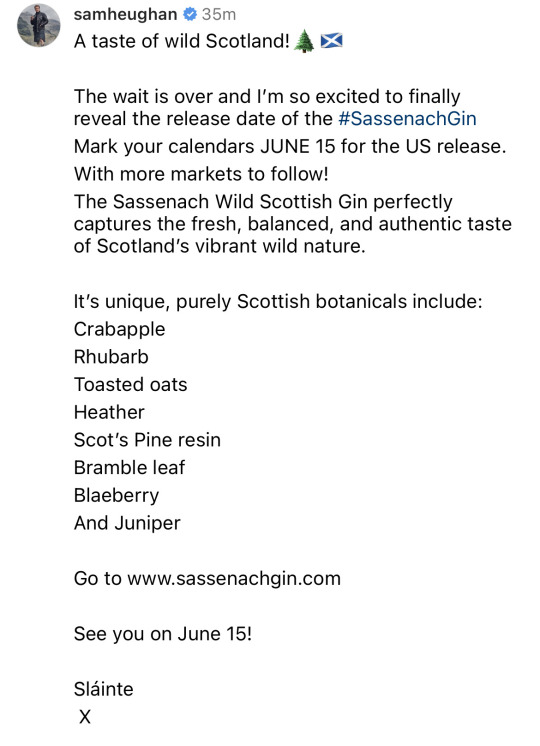
Galloway Forest Park
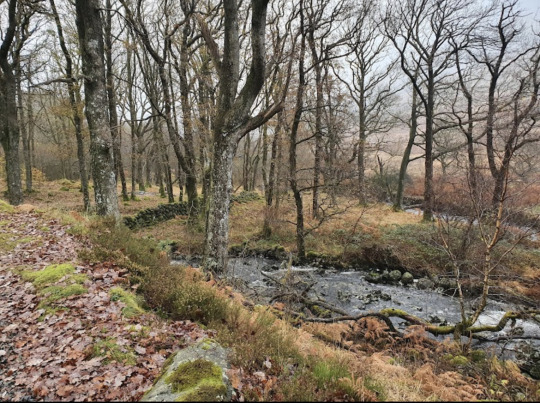
Take a look at his first Gin’s detail! In Galloway Forest Park. We knew he was in Galloway searching for inspiration but why not give them his first review before?📍This is Scotland 🏴 He must mention it to Discover Dumfries & Galloway and the Scottish Borders in South Scotland.
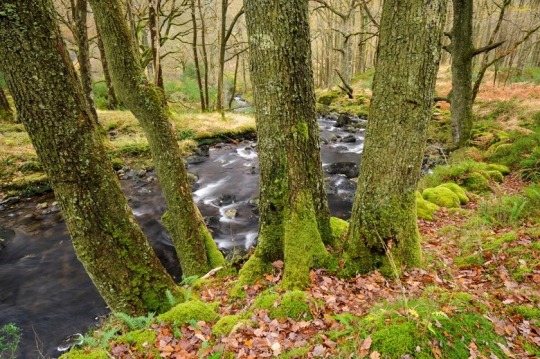
Everything is very ecological including his kilt matching the environmental colours.
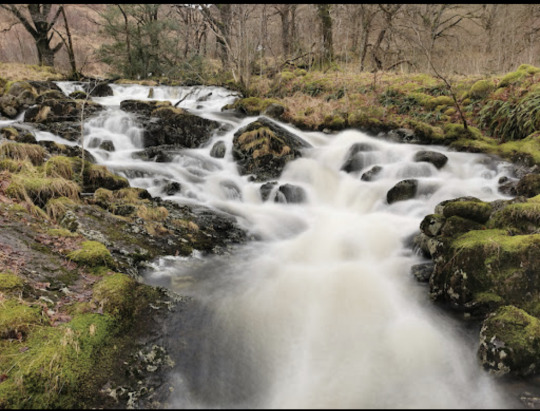
He is around to Loch Trool a narrow, freshwater loch in Galloway, in the Southern Uplands in south-west Scotland. It lies in an elevated position in Glen Trool in Galloway Forest Park.
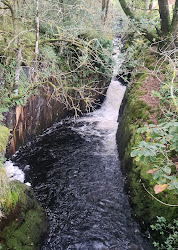
I've posted before, his friends at the Gin Cooperative are waiting for his Scottish gin. Let me guess he will be an entrant in The Gin Cooperative Awards 2023! …Nothing better than with a little help from his friends 🤷

#GallowayForestPark Dumfries&Galloway #ScottishBorders #SouthScotland #LochTrool #Scotland
7 notes
·
View notes
Text
Outlander and Deep Time
Who here loves Outlander and geology? Yes, you, raising hands in the back? Guess not, that was just someone being dragged under by the Loch Ness monster. Anyway, the link between OL and geology is Sam Heughan’s birthplace, Galloway, the region in Scotland’s southwest. The 18th century Scottish scientist James Hutton investigated rocks in Galloway (and Glen Tilt and the island of Arran) to demonstrate the truth of his theory that a convection engine in the middle of the Earth was pushing granite up through strata closer to the surface. So? This rock flow would take a long, long, time. In 1785 when Hutton presented his theory, people, calculating from the Book of Genesis, estimated that the Earth was 6,000 years old. No, said Hutton, for rock to flow like this, the Earth must be millions, maybe billions of years old, or maybe without beginning or end (the Big Bang was yet to be discovered). The Scot, James Hutton, was The Man Who Found Time, deep time, in part by visiting Galloway.
5 notes
·
View notes
Text
Think of The true confessions of a justified sinner, by James Hogg (pen name the Ettrick Shepherd, because he was in fact a shepherd from Glen Ettrick in Galloway) a Gothic work and the most Scottish book ever written. It is a book where the main narrative, set during the period of the Covenanters and the Scottish Wars of Religion is repeated twice over, once by the modern antiquarian from Glasgow who has rediscovered the text (in the grave of the mian character, no less!), who writes it in his voice, that of an enlightened Liberal burgher in Glasgow, a modern, looking back at a text of antiquarian interest and full of the prejudices of his class and time, and the second half is the extremely psychologicaly intense first-hand account of the main character, a Calvinist fanatic, heretic, and serial murderer as he is visited by the Devil and struggles with his own shattered psyche. The actual author even appears in the text (which was published anonymously) as an Ettrick Shepherd who helps the antiquarian find the grave and who speaks in broad Scots condemning the whole affair and the editor. Compared to this, Tolkien appears positively hinged.
I think a lot of people are getting the wrong idea when they call Tolkien a freak because he invented this elaborate framing device whereby the Red Book of Westmarch was actually written by Bilbo and Frodo (with some addenda by Sam) and he, Tolkien, was merely an editor and translator. Throughout history it's actually been a very common literary device for an author to represent their work as having been written by a character who appears in the story, with the author themselves variously positioned as a translator, editor, and/or literary executor. At the time that Tolkien was writing, such a device would have been seen as somewhat old-fashioned, but certainly not eccentric. Like, Tolkien was definitely a freak, but not for that reason.
6K notes
·
View notes
Text
877: Leah Orleans -Legacy Mystifyer
Leah Orleans is the progeny of Jan Rose and Danny Orleans, Chicago based magicians. It only seemed natural that her path would be in the entertainment arts, but instead of traditional magic, Leah pursued the circus arts. She is a contortionist, fire eater, juggler, and even bends over backwards to shoot an arrow from a bow held by her feet! Her profession takes her around the world to Renaissance Festivals, cruise ship destinations, and more.
youtube
This week, Leah talks about growing up in a magical household with both parents working in the magic business. She also discusses how she went into the circus arts and the classes she took and the places it has taken her. Leah also talks about Mystify Magic Festival and what will make this convention stand out from all the others. She has some great words of advice to convention organizers in general, too.
Download this podcast in an MP3 file by Clicking Here and then right click to save the file. You can also subscribe to the RSS feed by Clicking Here. You can download or listen to the podcast through Pandora and SiriusXM (formerly Stitcher) by Clicking Here or through FeedPress by Clicking Here or through Tunein.com by Clicking Here or through iHeart Radio by Clicking Here. If you have a Spotify account, then you can also hear us through that app, too. You can also listen through your Amazon Alexa and Google Home devices. Remember, you can download it through the iTunes store, too. See the preview page by Clicking Here.
Dick Blowers
David Oliver
William “Bill” Rauscher
Chuck Golla
Ed Hurtubis
Daniel Sclare
Ron Jernigan
Doc Sheils
Glen Ghirardi, Sr.
John Apperson
Andrew Galloway
Bob Sanders
Emory Williams
Harriet Jacobson
Jon Racherbaumer
George Joseph “The Amazing Kreskin” Kresge, Jr.
Leonardo Trébole
0 notes
Text
youtube
Trumans Water - Empty Queen II
#trumans water#empty queen ii#kevin branstetter#glen galloway#kirk branstetter#ely moyal#noise rock#punk#punk rock#10 x my age#ep#1993#Youtube
1 note
·
View note
Text
In the Footsteps of the Saints
The Machars of Galloway have a long association with St Ninian (whose shrine in Whithorn was once the prime pilgrimage site in Scotland) and other early Christian saints. Throughout the Summer we are offering a programme of short pilgrimage-style events at various sites around the area. These will involve a walk of around half an hour in the beautiful Galloway countryside, pausing along the way to connect with our surroundings and the spiritual dimension beyond, and will each conclude with a short act of prayer and reflection at a particular holy site. Where possible these will link in with the weekly Ninian Moments acts of prayer inWhithorn and Wigtown.
Some events will be dependent on the tide to allow access to parts of the route so it is not possible to give exact times in advance - see website.
All events are open to locals and visitors alike and are free of charge (donations welcome). Please dress for the weather. Stout shoes are advisable. You participate at your own risk.
First Tuesday of the Month
St Ninian and the church in Whithorn
Meet at Rispain Camp (between Whithorn and Glasserton) at 10.45am
Third Tuesday of the Month
Various locations, including Physgill Glen & Ninian’s Cave, St Medan’s Church & Well, Isle of Whithorn & St Ninian’s Chapel
(Please see our website for details)
Mondays 8 July, 26 August, 30 September
The Wigtown Martyrs
Meet at Wigtown Market Cross at 10.45am

0 notes
Text
(it's also worth looking up what influenced the art styles of the show; you'd be surprised how many cartoons have little nods to Ratfink/Big Daddy Roth, sometimes in obvious ways, but also more subtly. the 2003 Teen Titans was influenced a bit by Gorillaz, with a lot of the concept art/style refined by Glen Murakami. anime like the original FLCL influenced certain aspects of Avatar the Last Airbender. for the animated Hellboy movies, they wanted the art to reflect the feel of the original comics by Mike Mignola, but with a unique look as well, and the artist Sean Galloway "Cheeks" used his style of dynamic shapes to combine it all. Shows like Fairly Odd Parents/Danny Phantom have similarities in common with Hanna-Barbera cartoons like the Flintstones and the Jetsons, but some of the things that made the shows have a defined look came from Bob Boyle, who also worked on Yin Yang Yo an Wow Wow Wuzby, which don't look much like Flinstones/Jetsons, but they DO look like FOP/DP. In the episodes of Gravity Falls "The Last Mabelcorn" and "Dungeons, Dungeons, and More Dungeons", there are character design homages to Rankin and Bass animated movies, "The Last Unicorn" and "The Hobbit"/"Return of the King", and a little bit of the Ralph Bakshi "Lord of the Rings" animated film as well. Gargoyles, the Swan Princess, and X-Men; Evolution all shared characters designs done by Steven E Gordon, and each of those have gone on to influence a variety of super hero/fantasy stories. Genndy Tartakovsky has mention his big cartoon influences were from Bob Clampett, Tex Avery, and Chuck Jones. sorry for such a long addition, but it's really cool when you notice little hints of multiple influences in an animated show or movie, and you can connect all the dots between what inspired people and who has worked together, etc~)
If I could give anyone a bit of advice about mimicking the style of your favorite show, it's that I highly recommend looking at & studying the background characters before you decide to pull traits from main characters
the powerpuff girls look different from the other children from pokey oaks kindergarten, dib and zim look different from other skool children or irken invaders, simpsons background characters are not allowed to have stuff like lisa and bart's hair or homer's 5-oclock shadow in normal circumstances
background characters are meant to be 1) numerous and 2) blend into the scenery, so they're a great way to see what the ppl making the show consider the average and consistent traits they want to repeat in order to fill a crowd or make new side characters
and then once you understand that, THEN you can go nuts and break those conventions, make your cool as hell ocs, and appreciate why the main characters stand out the way they do
2K notes
·
View notes
Link
Check out this listing I just added to my Poshmark closet: New Madewell Size S The Dorset Blazer in Galloway Plaid.
0 notes
Video
youtube
I Need a Doctor by Hot Snakes from the album Jericho Sirens
#music#hot snakes#sub pop records#rick froberg#john reis#eric froberg#gar wood#jason kourkounis#mario rubalcaba#dave gardner#glen galloway#rob crow#matt lamkin#robertdale rulon crow#ben moore#cody cichowski#robertdale rulon crow jr#mario rodolfo rubalcaba#robertdale rulon crow jr.#sub pop
23 notes
·
View notes
Text
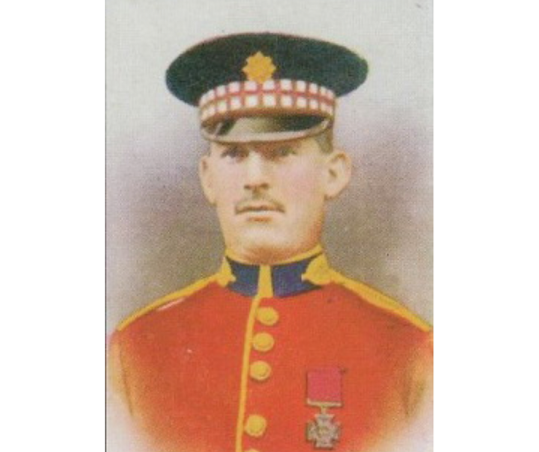

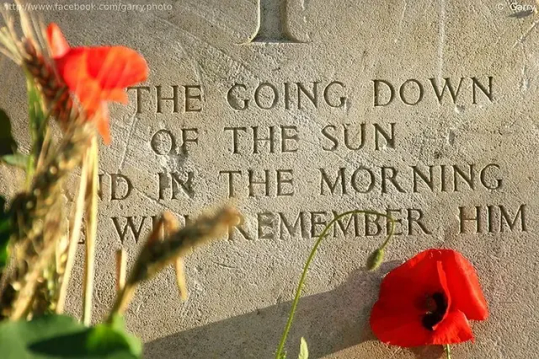
On 2nd April 1889, James MacKenzie was born.
Mackenzie was born at West Glen, New Abbey, Kirkcudbrightshire on 2nd April 18849. His father was Alexander McCortie Mackenzie, a mason. His mother was Marion Carnduff nee Millar. Alexander and Marion had married on 8th June 1883 in West Glen. The family moved to Maxwelltown when James was young. He had a brother and six sisters.
James was educated at Maxwelltown School and after school was employed at Locharbank Farm at Bank End, on his maternal grandparents farm at Barncleugh, Irongray and later as a joiner with Messrs Williamson in Maxwelltown.
When he enlisted on 16th February 1912, he gave his age as 23 although he was 27, to ensure he got in, and gave his occupation as a groom. He went to France with his unit, the 2nd Battalion, Scots Guards, arriving on 7th October 1914.
On 19th December 1914 at Rouges Blancs, France, Private MacKenzie rescued a severely wounded man from the front of the German trenches under a very heavy fire and after a stretcher party had been compelled to abandon the attempt. Private MacKenzie was killed later on that day while trying to carry out a similar act.
Sadly, Mackenzie’s body was not recovered following the action at Rouges Blancs, and he is commemorated on the Ploegsteert Memorial, Belgium. James had never married and the VC was sent to his mother on 9th March 1915. In addition to his VC, he was awarded the 1914 Star with Mons clasp, British War Medal 1914-20 and Victory Medal 1914-19. His mother later presented his medals to the Scots Guards Regiment and they are held by the Regimental HQ, Scots Guards, Wellington Barracks, London.
A memorial stone was laid in Maxwelltown in December 19th 2014 to commemorate Private MacKenzie by Dumfries and Galloway County Council.
9 notes
·
View notes
Photo





Trumans Water - Bierkeller, Bristol 20th September 1993
#trumans water#trumans water band#kirk branstetter#kevin branstetter#jeff jones#glen galloway#alternative rock#post-punk#noise rock#indie rock#slackers#slacker rock#homestead records#drunken fish#bands#gigs#live gigs#band photography#gig photography#indie music#music#live music
10 notes
·
View notes